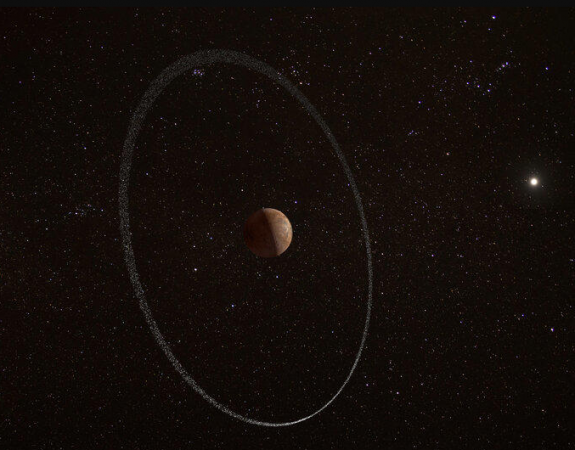
USA: Astronomers have been surprised by a small planet called Quaoar. The 2022 discovery of the cold planet features a ring of dust and debris resembling Saturn. But according to a recent study, the distance Quaoar's ring is at defies laws.
The so-called trans-Neptunian objects group, which includes dwarf planets orbiting beyond Neptune in our solar system's outermost region, includes Quaoar.
Although Quaoar is thought to be a dwarf planet, the International Astronomical Union has not yet given it a formal classification. It has a moon called Weywot, which orbits past the ring and is 170 kilometres wide.
Also Read: Economic ties between China and the US and the global economy: Rebalancing vs. Decoupling
The planet, which is half the size of Pluto, is located in the Kuiper Belt, a ring of icy objects in the outer solar system.
Quaoar's ring has an unusually large diameter of about 8,200 kilometres and is situated 4,100 kilometres from Quaoar's centre. Scientists assert that the planet shouldn't be able to hold the suspended particles in the manner it does given the distance to the ring. The ring should have instead accumulated under the force of its own gravity to create a moon similar to Weywot, but that didn't happen.
The Roche limit was broken by Quaoar's ring, making it the first known ring around a celestial body to do so. The Roche limit is the range of a celestial body's gravitational field where it is sufficiently strong to prevent any smaller body from being held together by gravity. The Roche limit is a region where orbiting material is prone to disperse.
Giovanni Bruno, an astronomer at Italy's National Institute for Astrophysics, said: "What is so intriguing about this discovery around Quaoar is that the ring of material is much farther out than the Roche limit" (INAF). Our observations require a thorough revision of the conventional wisdom that dense rings can only exist within a planet's Roche limit.
The largest ring system in our solar system is found on Saturn. Rings are also present on other gas planets like Jupiter, Uranus, and Neptune. Rings can also be found on non-planetary bodies like the asteroid Chariklo and the trans-Neptunian object Haumea. But each one is contained by the Roche limit.
According to Isabella Pagano, co-author of the study, a ring "made of debris, resulting from a putative disruptive impact into a Quaoar moon, would survive for a very short time-but the probability to observe that is extremely low."
Also Read: Argument over West Bank outpost reveals Israel's Cabinet's division
The theories governing the assembly of icy particles "need to be revised," according to Pagano, and it's possible that the process takes longer than anticipated.